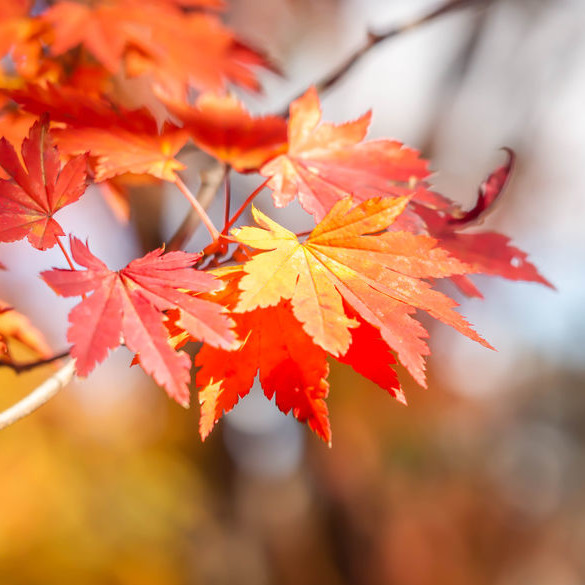
Maple Fiber
What is Maple Fiber?
Maple fiber is a multi-functional ingredient sourced from red maple trees and water using a specialized process. It is an insoluble dietary fiber made up of cellulose, lignin and other non-starch polysaccharides naturally present in red maple and most other plants.1
It is well suited for the production of:
- Yeast-leavened products
- Chemically-leavened sweet goods
- Fresh baked goods
- Pasta and flatbreads
- Clean label dry mixes for pancakes and waffles
- High-fiber, protein bars cereal-based products
Origin
Red maple is one of the most common and widespread deciduous (hardwood) trees of eastern and central North America. Red maples can be sustainably harvested. They grow well in a wide variety of environments and are prolific seed producers. Maple fiber product is produced from red maple using a simple, yet proprietary, water extraction process.
Function
Being a natural multi-functional ingredient, maple fiber can be used in the food and baking industry as a:
- Water binder for moisture retention: extension of textural shelf-life
- Emulsifier alternative to eggs and to highly modified emulsifiers
- Thickener in batter formulations: replacing thickening functionality of eggs and modified starches
- Hydrocolloid improver: especially for gluten-free formulations
- Stabilizing agent: to prevent gas coalescence in doughs and batters
- Dough conditioner: for bread and buns formulations, in synergy with hemicellulases and cellulase
- Fiber enriching ingredient: for low-calorie/high-fiber cereal products
Nutrition and health
Maple fiber is made up from basic complex carbohydrate components typical of plants. Namely, cellulose, hemicellulose and lignin. All of these non-starch polysaccharides are considered digestive fibers with recognized physiological and digestive benefits.2
Commercial production
Maple fiber is produced through a proprietary supercritical water process known as Plantrose™ technology. This process requires no harsh chemicals or organic solvents. Instead, it only uses water at high temperatures and pressures to break down the plant cell walls. Under such conditions water acts as a solvent to extract cellulose, lignin, and other dietary fiber compounds.
Application
Maple fiber can be used as a source of dietary fiber in the production of high-fiber and low-calorie breads. As a dough conditioner, it provides enhanced gas bubble stability. This is a result of its viscosity building in the dough liquid phase. Its optimal dosage ranges from 0.1 to 0.5% (based on flour weight) without creating too much competition for proper gluten hydration development.
Process and formula considerations when adding fiber
Edible plant fibers typically bind large amounts of water which can be held through the baking process.3 This is the reason for the high moisture content of fiber-containing bread. Also, their tendency to form a slightly fragile crumb if not baked accordingly. Cellulosic fiber, a natural component of maple species, has high water binding capacity. There are strategies to prevent sidewall collapse during cooling and slicing of fiber-containing bread. While processing, increase:
- Oven temperature from burners output, and maintain normal bake times
- Baking time with same temperature profile
- Exhaust rate to remove humid air from baking chamber
- Air speed by forced convection systems
Formulation
- Increase levels of gluten and oxidizing agents
- Decrease crumb softening emulsifiers, such as GMS and maltogenic amylase
- Use stronger or high-protein flour
Sponge and dough system as process ally
Maple fiber performs well in sponge and dough (S&D) systems. This is because they allow for properly pre-hydrating highly water-competitive ingredients that tend to limit the functionality of gluten-forming proteins in the dough. This is critical in the production of high-specific volume pan bread.
FDA regulation
Maple fiber that’s produced using the Plantrose process is affirmed as Generally Regarded as Safe (GRAS) in the United States. It is a dietary fiber under the FDA’s regulations and guidelines because it is made of mixed cell wall fiber, including cellulose.4
References
- BeMiller, J.N. “Cellulose and Cellulose-Based Hydrocolloids.” Carbohydrate Chemistry for Food Scientists, 3rd edition, AACCI. Published by Elsevier Inc. in cooperation with AACC International, 2019, pp. 223–240.
- BeMiller, J.N. “Carbohydrate Nutrition, Dietary Fiber, Bulking Agents, and Fat Mimetics.” Carbohydrate Chemistry for Food Scientists, 3rd edition, AACCI. Published by Elsevier Inc. in cooperation with AACC International, 2019, pp. 323–346.
- Nelson, A.L. High-Fiber Ingredients, Eagan Press Handbook Series, American Association of Cereal Chemists, Inc., 2001.
- Review of the Scientific Evidence on the Physiological Effects of Certain Non-Digestible Carbohydrates.” The Food and Drug Administration. 14 June. 2018. https://www.fda.gov/Food/LabelingNutrition/ucm610115.htm

